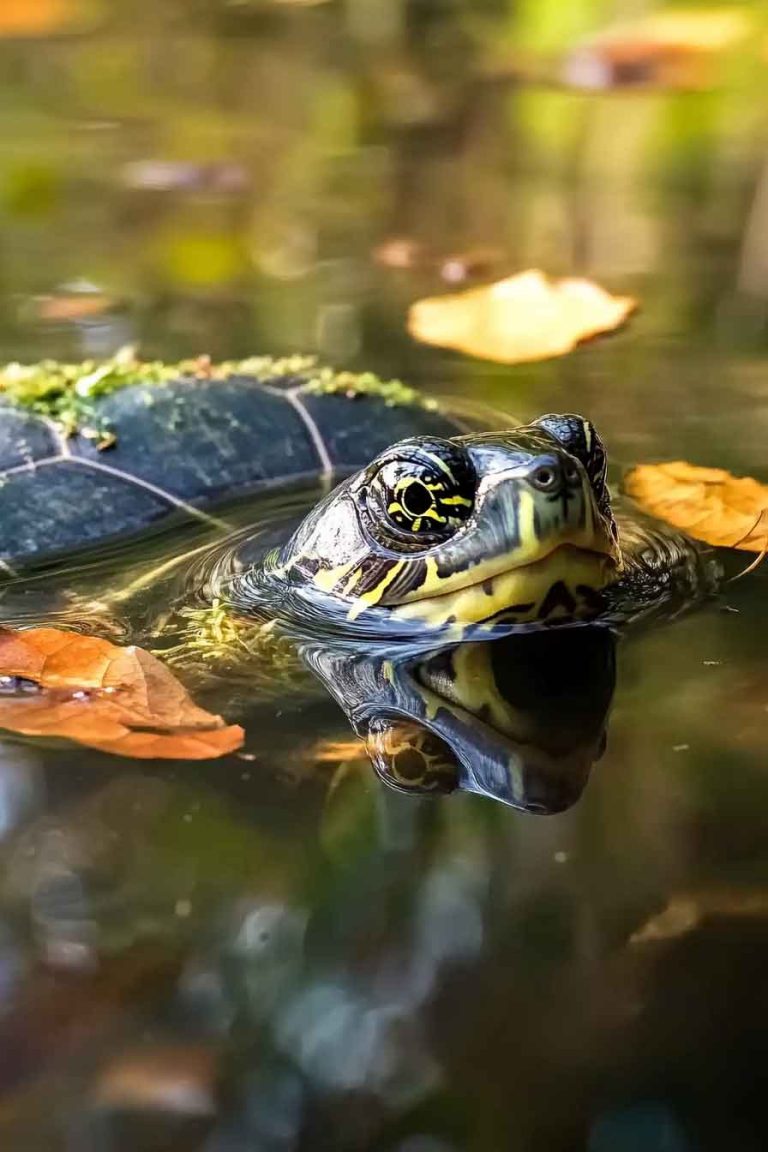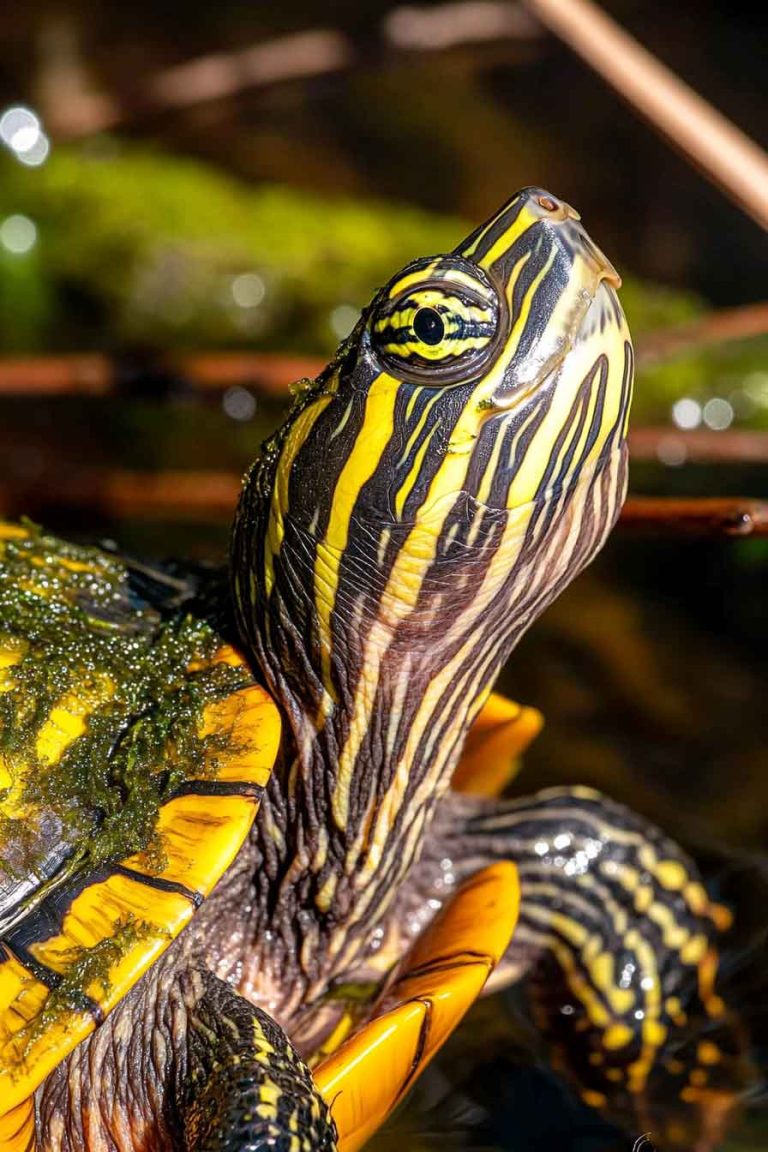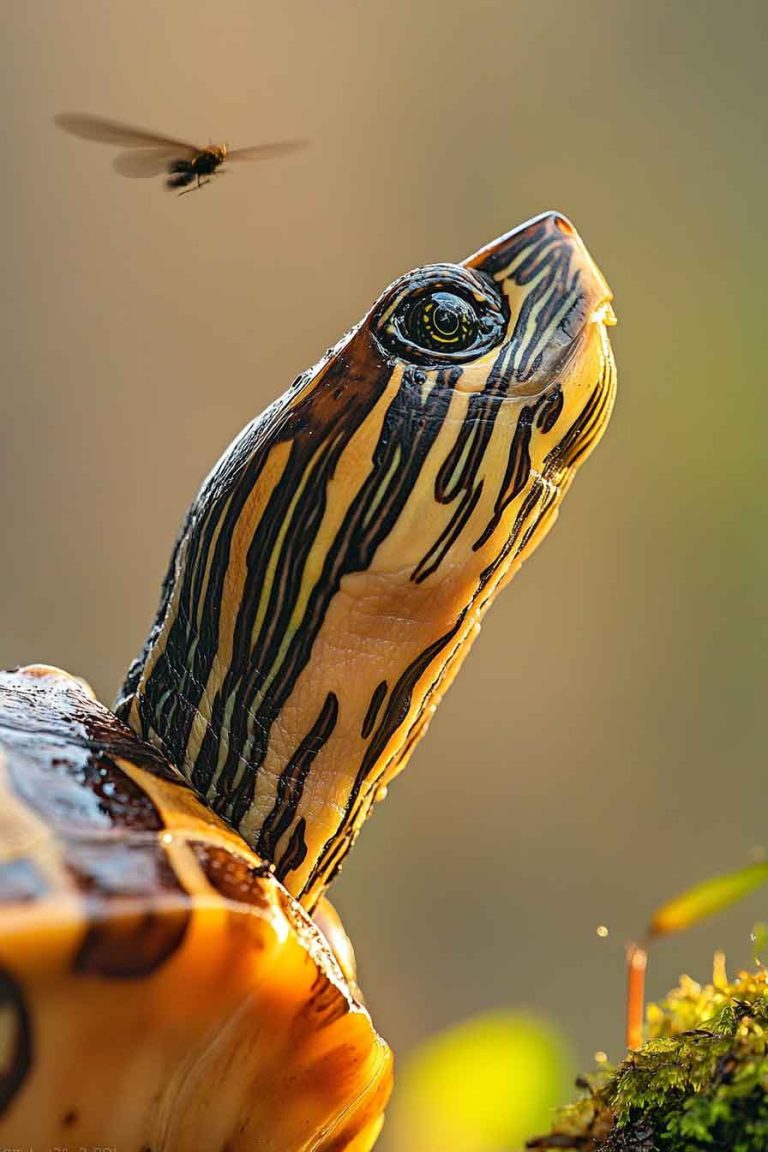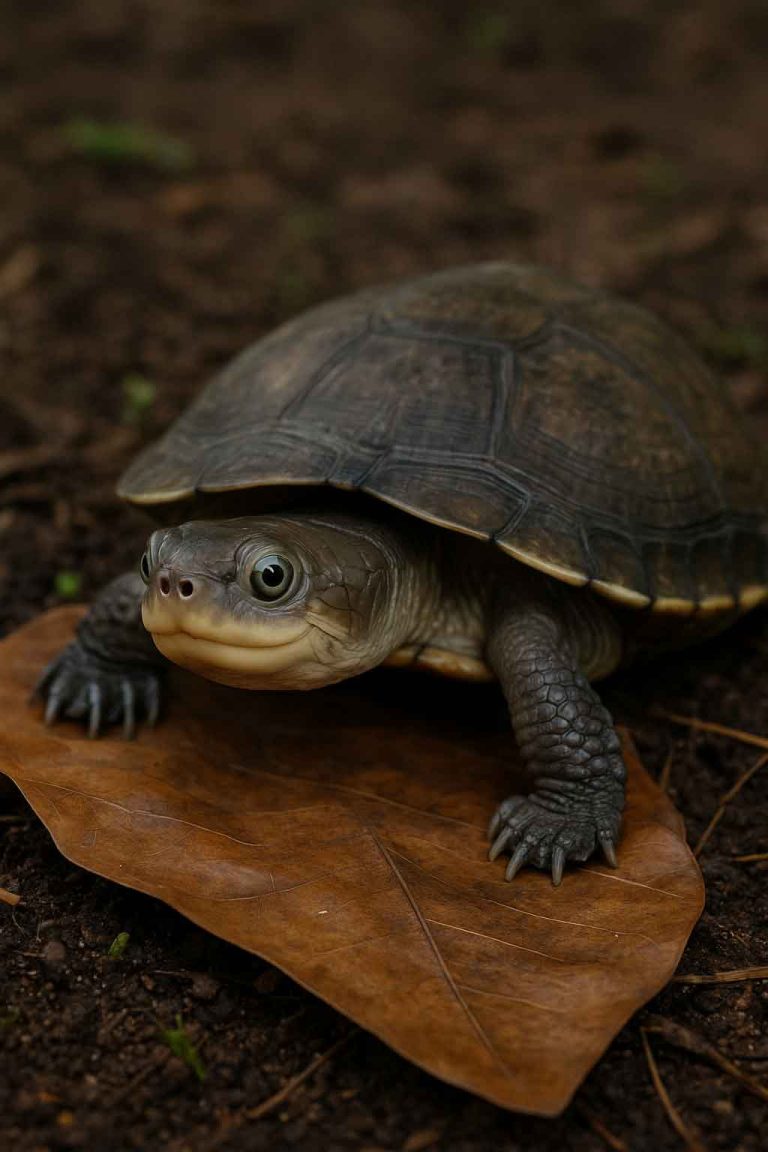Chinese Softshell Turtle Care: Ultimate Guide to Tank Setup, Diet & Health
Hey there, turtle enthusiasts! If you’re thinking about bringing a Chinese softshell turtle into your life or already have one and want to ensure it thrives, you’re in the right place. These unique creatures, with their soft, leathery shells and snorkel-like noses, are fascinating pets but require specific care to stay healthy and happy. I’ve…
Hey there, turtle enthusiasts! If you’re thinking about bringing a Chinese softshell turtle into your life or already have one and want to ensure it thrives, you’re in the right place. These unique creatures, with their soft, leathery shells and snorkel-like noses, are fascinating pets but require specific care to stay healthy and happy. I’ve put together this ultimate guide based on my research and experience to help you give your Chinese softshell turtle the best life possible.
What Makes Chinese Softshell Turtles Unique?
I’ll be honest—when I first saw a Chinese softshell turtle, I was captivated by its odd charm. Unlike hard-shelled turtles, these guys (Pelodiscus sinensis) have a flexible, leathery shell that feels almost rubbery. Their long necks and tube-like nostrils let them breathe while barely surfacing, which is super cool to watch. They’re semi-aquatic, meaning they spend most of their time in water but need land for basking or resting.
These turtles are native to East Asia, particularly China, Vietnam, and Taiwan. In the wild, you’d find them in slow-moving rivers, ponds, or marshes with muddy or sandy bottoms—perfect for burrowing. They’re carnivorous, munching on fish, insects, and crustaceans, and they’re known for their curious, sometimes feisty personalities. Knowing this helps me understand what they need in captivity to feel at home.
Setting Up the Perfect Tank for Your Chinese Softshell Turtle
When I set up my turtle’s tank, I learned quickly that these softshells need a specific environment to thrive. Here’s what I recommend for creating their ideal home:
Tank Size
Chinese softshell turtles grow to about 8-12 inches in shell length, so they need space. I suggest a minimum of 75 gallons for a single adult, but bigger is always better. If you’re starting with a hatchling, a 40-gallon tank works temporarily, but plan to upgrade as they grow. For each additional turtle, add at least 20 gallons to avoid crowding, as these guys can get territorial.
Water Quality and Filtration
I can’t stress enough how important clean water is for softshells. Their soft shells are prone to infections if the water gets dirty. I use a canister filter rated for at least twice the tank’s volume—think a filter for a 150-gallon tank on a 75-gallon setup. Change 25-30% of the water weekly and test for ammonia, nitrites, and nitrates to keep things pristine.
Substrate
In the wild, these turtles love to bury themselves in mud or sand. I use a fine sand substrate about 2-3 inches deep in my tank, which lets my turtle burrow comfortably. Avoid gravel or sharp substrates, as they can scratch the turtle’s delicate shell. If you prefer a bare-bottom tank for easier cleaning, that’s fine, but add some hiding spots like PVC pipes or smooth rocks.
Water and Basking Temperatures
Since softshells are ectothermic (their body temperature depends on their surroundings), I keep the water between 75-80°F using a submersible heater. For the basking area, I aim for 85-90°F with a heat lamp. A UVB lamp is crucial too—it mimics sunlight and helps them produce vitamin D3 for strong bones. I check temperatures daily with a digital thermometer to ensure everything’s spot-on.
Basking and Land Area
Even though they love water, my softshell occasionally climbs onto a basking platform to dry off or soak up heat. I use a smooth, sloped platform or a piece of driftwood that’s easy for them to access. Make sure it’s sturdy, as these turtles can be surprisingly strong. The land area doesn’t need to be huge—just enough for them to fully rest out of the water.

Feeding Your Chinese Softshell Turtle
Feeding my Chinese softshell turtle is one of the most rewarding parts of caring for it, but it took some trial and error to get it right. These turtles are primarily carnivorous, so their diet needs to reflect what they’d eat in the wild. Here’s how I keep my turtle well-fed and healthy:
Diet Basics
I offer my softshell a variety of protein-rich foods to mimic its natural diet. Staples include small feeder fish (like guppies or minnows), shrimp, earthworms, and crickets. I also mix in high-quality commercial turtle pellets designed for carnivorous species, as they’re packed with vitamins and minerals. Occasionally, I toss in some chopped lean meats like chicken or beef heart, but I avoid fatty meats to prevent health issues.
Hatchlings need to eat daily, while adults can be fed 3-4 times a week. I feed my turtle in a separate container to keep the tank water clean—trust me, these guys are messy eaters! A good rule of thumb is to offer as much food as they can eat in 10-15 minutes.
Supplements
To keep my turtle’s shell and bones strong, I dust its food with a calcium supplement twice a week. A reptile multivitamin once a week also helps ensure it’s getting all the nutrients it needs. Be careful not to overdo supplements—follow the product instructions or check with a vet.
Things to Avoid
I learned the hard way not to feed my softshell processed human foods, like bread or dairy, as they can’t digest them and may get sick. Also, steer clear of raw pork or fatty fish, which can carry parasites or cause vitamin deficiencies. Always rinse live or frozen foods to remove any contaminants before feeding.
Handling Your Chinese Softshell Turtle
I’ll be upfront—Chinese softshell turtles aren’t the cuddliest pets. They’re more independent than, say, a dog, and handling them requires care. Here’s how I approach it:
Minimizing Stress
My softshell gets stressed easily, so I limit handling to when it’s necessary, like during tank cleanings or health checks. When I do pick it up, I use both hands to support its body, gripping gently but firmly behind the front legs to avoid its sharp claws and strong jaws. Their necks are surprisingly long, so I keep my fingers away from the head to avoid a nip!
Building Trust
Over time, I’ve noticed my turtle gets more comfortable with me if I move slowly and avoid sudden movements. Feeding it by hand (with tongs, not my fingers!) has helped it associate me with food rather than danger. Still, these turtles aren’t big on interaction, so I respect its space and let it do its thing.
Safety Tips
Always wash your hands thoroughly after handling your turtle or touching its tank water. Softshells can carry bacteria like Salmonella, which is harmless to them but risky for humans. I also keep my turtle away from young kids who might not handle it gently or follow hygiene rules.
Common Health Issues and How to Spot Them
Keeping my Chinese softshell turtle healthy means staying vigilant for signs of trouble. Their soft shells and aquatic lifestyle make them prone to specific issues. Here are the ones I watch for:
Shell Infections
Because their shells lack hard scutes, softshells can develop bacterial or fungal infections if the water isn’t clean. I check for white patches, redness, or soft spots on the shell. If I spot any, I consult a reptile vet for antibiotics or antifungal treatments and double down on water quality.
Respiratory Infections
If my turtle is floating unevenly, wheezing, or has a runny nose, it might have a respiratory infection. This can happen if the water or basking area is too cold. I raise the water temperature slightly and seek vet care immediately, as these infections can turn serious fast.
Vitamin A Deficiency
A lack of vitamin A can cause swollen eyes, lethargy, or skin issues. I prevent this by ensuring a varied diet and using a multivitamin supplement. If symptoms appear, a vet can prescribe vitamin A injections to get things back on track.
General Tips for Prevention
I keep health issues at bay by maintaining ideal tank conditions—clean water, proper temperatures, and UVB lighting. Regular vet checkups (once a year or if I notice anything off) help catch problems early. If my turtle stops eating or acts sluggish, I don’t wait to investigate, as these can be early warning signs.
Social Behavior and Tank Mates
When I first got my Chinese softshell turtle, I wondered if it would enjoy some company. These turtles, however, are mostly solitary creatures, and I’ve learned they often prefer their own space. Here’s what I’ve figured out about their social needs and whether tank mates are a good idea:
Are They Social?
In my experience, Chinese softshell turtles aren’t exactly the life of the party. They can be territorial, especially as adults, and may get aggressive with other turtles over space or food. I keep my softshell solo to avoid any drama, but if you’re set on housing multiple turtles, make sure the tank is large—think 100+ gallons for two—and has plenty of hiding spots to reduce stress.
Choosing Tank Mates
I’ve found that adding other animals to the tank is tricky. Softshells are predators, so small fish or invertebrates often become lunch. If you want tank mates, consider hardy, fast-moving fish like danios or larger species that won’t fit in your turtle’s mouth. Avoid housing them with other turtle species, as differences in care needs or aggression can cause problems. I always monitor any tank mates closely for signs of stress or injury.
Signs of Trouble
If you do try multiple turtles, watch for bullying. I check for bite marks, missing claws, or one turtle hogging the basking area while the other hides. If I see these signs, I separate them immediately. A crowded or stressful tank can lead to health issues, so I err on the side of giving my turtle its own space.
FAQs
I get a lot of questions from fellow turtle keepers, so here are some of the most common ones I hear about Chinese softshell turtles:
1. How long do Chinese softshell turtles live?
With proper care, these turtles can live 20-30 years, sometimes longer! I’m committed to giving my turtle a long, healthy life with the right tank setup, diet, and vet care.
2. Can Chinese softshell turtles live with other pets?
I wouldn’t recommend it. Their sharp claws and strong jaws can injure other pets, and their tank’s warm, humid environment isn’t safe for most household animals. Plus, the risk of Salmonella means I keep my turtle’s space separate from my other pets.
3. How often should I clean the tank?
I do a 25-30% water change weekly and a full tank clean (including scrubbing the tank and replacing substrate if needed) every 1-2 months. A good filter helps, but regular maintenance is key to keeping the water clean for my softshell.
4. Do Chinese softshell turtles need to bask?
Yes, but they don’t bask as much as other turtles. I provide a basking area with UVB and heat, and my turtle uses it occasionally to dry off or warm up. It’s essential for their health, even if they prefer the water.
Final Word
Caring for my Chinese softshell turtle has been a journey of learning and love. These unique creatures, with their quirky looks and independent personalities, bring so much joy, but they need dedication to thrive. By setting up a spacious tank with clean water, feeding them a varied carnivorous diet, handling them carefully, and watching for health issues, I’ve seen my turtle flourish.
I hope this guide helps you feel confident in giving your Chinese softshell turtle the best care possible. Whether you’re a new owner or a seasoned keeper, remember to enjoy the little moments—like watching them burrow or snorkel at the surface. If you stay consistent with their care, you’ll have a fascinating companion for decades. Got questions or tips of your own? Drop them in the comments—I’d love to hear from you!






